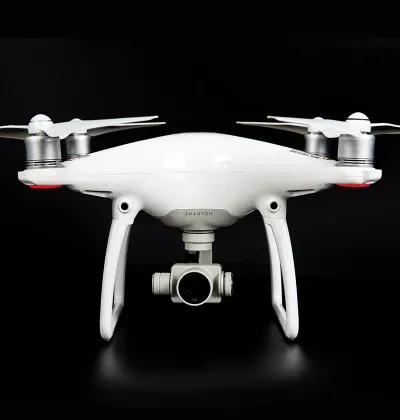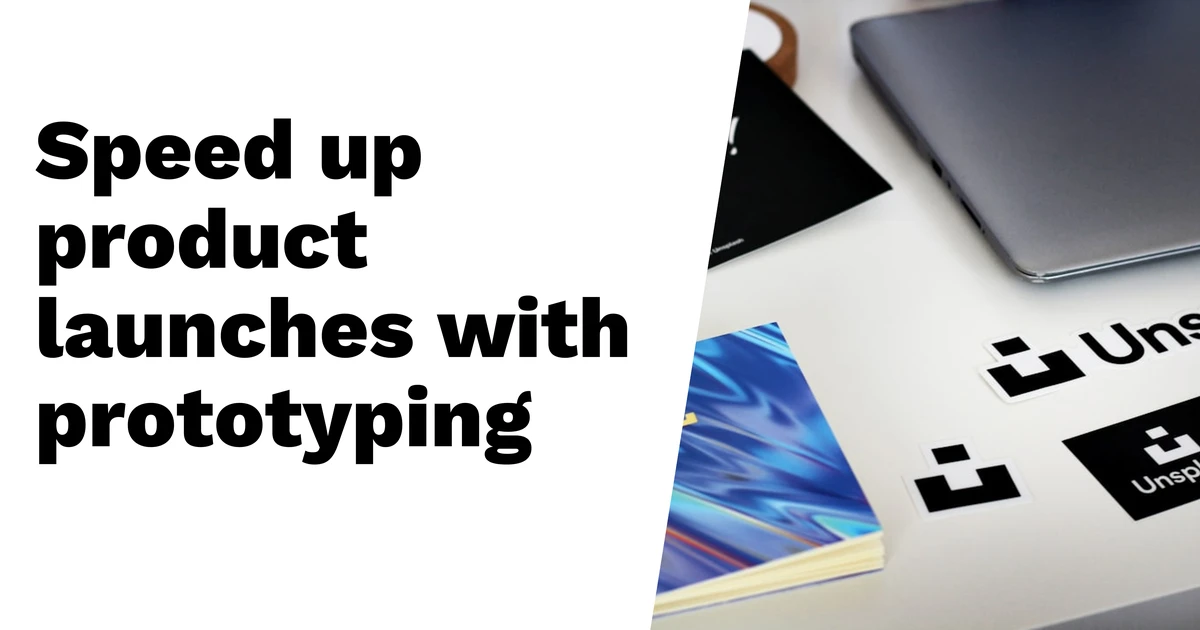- Room 1807, Unit 9, Building 2, Shangxing Commercial Street, Shangde Road, Shangxing Community, Xinqiao Subdistrict, Bao'an District, Shenzhen City, China




Aerospace & UAV
WJ Prototypes is your 3D manufacturing partner from prototype to large scale production.
Consumer Electronics
New Product Introduction Solutions for Consumer Electronics.

Robotics & Automation
Need some assistance bringing your robotic device or parts from the sketch-board to reality?
Medical Devices
The medical industry needs high quality, dependable and safe parts and products.
Automotive
New Product Introduction Solutions for Automotive
Industrial Machinery
The main purpose of industrial prototyping is to take the product from drawings into the real world.

Rapid prototyping is reshaping how Australian companies approach product development. This modern manufacturing technique, which includes methods like 3D printing and CNC machining, allows businesses to quickly transform digital designs into tangible prototypes. By partnering with Chinese manufacturers offering affordable and advanced prototyping services, Australian firms can significantly enhance their speed to market. With turnaround times often just days compared to the weeks typically required, companies benefit from faster feedback loops and reduced design flaws. Industries such as automotive and medical devices are reaping the rewards of this swift process, making it easier for them to stay competitive in a fast-paced marketplace.

Rapid prototyping is a crucial part of modern manufacturing, enabling companies to turn digital designs into physical prototypes quickly. This process leverages technologies like 3D printing and CNC machining, which allow for rapid iterations of product designs. The significance of rapid prototyping lies in its ability to streamline product development, helping businesses to test and refine their ideas swiftly.
In comparison to traditional prototyping methods, which can be time-consuming and costly, rapid prototyping offers a faster turnaround. For example, while traditional methods might take weeks to produce a prototype, 3D printing can often achieve this in just a few days. This speed is vital for businesses looking to respond to market demands and user feedback effectively.
Technologies such as CNC machining are known for their precision, capable of producing parts with dimensional accuracy down to ±0.05 mm, making them ideal for functional prototypes. Similarly, 3D printing allows for complex designs that can be adjusted easily during the prototyping stage.
Despite its advantages, rapid prototyping is not without challenges. Issues such as material limitations and the need for specific design considerations can arise. However, advancements in software have played a significant role in addressing these challenges, streamlining the prototyping stages and improving overall efficiency.
Various materials, from plastics to metal alloys, are used in rapid prototyping, each chosen based on the specific requirements of the project. As technology evolves, future trends in rapid prototyping are likely to include even more sophisticated materials and techniques, further enhancing the capabilities of manufacturers.
Companies like WJ Prototypes exemplify the offerings in this space, providing a range of rapid prototyping services tailored to meet diverse needs. By understanding the basics of rapid prototyping, Australian companies can leverage these technologies to speed up their product launches and enhance their competitive edge.
China's manufacturing landscape is a powerhouse, known for its vast capabilities and advanced technologies. The country offers a unique combination of low labour costs and abundant raw materials, making it a more affordable option for prototyping compared to Australia. This cost efficiency can be crucial for Australian companies aiming to keep their budgets in check while developing new products.
One of the standout advantages of Chinese manufacturers is their speed. Many can turn around prototype orders in as little as a week, ta to streamlined processes and access to cutting-edge machinery. This quick turnaround can significantly reduce the time to market, allowing Australian companies to test ideas and iterate designs rapidly.
Quality control is another area where Chinese manufacturers excel. Many firms implement rigorous quality assurance practises, ensuring that prototypes meet the required specifications. Certifications and standards are often adhered to, giving Australian companies confidence in the products they are developing.
Chinese manufacturers also offer a diverse range of services, from 3D printing to CNC machining and injection moulding. This variety allows Australian firms to choose the best technique for their specific needs, making prototyping more flexible and tailored.
When working with Chinese manufacturers, it’s essential to understand the logistics involved. Shipping times, customs regulations, and communication barriers can pose challenges. However, many companies are adept at navigating these issues, often having dedicated teams to handle logistics.
Cultural considerations play a significant role in successful collaboration. Building strong relationships with Chinese partners can lead to better communication and smoother operations. Understanding their business etiquette and communication style can help in forging effective partnerships.
Regulatory compliance is another important factor. Australian companies must ensure that their products meet local standards and regulations, which can sometimes differ from those in China. Staying informed about these requirements can prevent costly setbacks.
Several Australian companies have successfully leveraged Chinese manufacturers for their prototyping needs. For instance, businesses in the tech sector have reported faster development cycles and reduced costs by outsourcing their prototyping work.
While there are undeniable benefits, potential risks such as quality discrepancies, communication issues, and geopolitical factors should be carefully considered. Mitigating these risks through thorough research, clear agreements, and ongoing communication can lead to successful outcomes.
CNC machining is a popular technique that offers high precision and is widely used to create functional parts, especially in industries that require strict tolerances. It works by removing material from a solid block, allowing for intricate designs and complex geometries. For example, aerospace companies often use CNC machining to produce lightweight yet durable components.
3D printing has revolutionised the prototyping landscape, with various technologies catering to different needs. Fused Deposition Modelling (FDM) is known for its affordability and speed, making it ideal for creating simple prototypes. Stereolithography (SLA) produces high-resolution parts with smooth finishes, suitable for visual models in the consumer electronics sector. Selective Laser Sintering (SLS) is great for functional prototypes as it can use various materials, including nylon and metal powders, which are essential for automotive applications.
Vacuum moulding is effective for low-volume production, allowing companies to create multiple prototypes quickly and cost-effectively. This technique is particularly beneficial for testing out designs before moving to larger production runs, as it can produce up to 50 parts in a week.
Injection moulding is another rapid prototyping method but is more suited for larger runs after initial prototypes have been validated. It provides ace repeatability and can produce parts with intricate details, which is crucial for the medical device industry.
Laser cutting and engraving are invaluable tools in prototyping, offering precision cuts and the ability to create detailed designs quickly. This method is often used for creating parts from sheet materials and can be applied in fashion and product design, allowing designers to experiment with different shapes and sizes.
CAD software plays a vital role in all these techniques, enabling designers to create detailed 3D models that can be translated directly into the manufacturing process. It allows for easy modifications, ensuring that prototypes can be refined rapidly based on feedback.
Different materials are suitable for each prototyping method, with plastics, metals, and even biocompatible materials being used depending on the technique and application. Emerging technologies like bioprinting are pushing the boundaries of rapid prototyping, especially in the medical paddock, where custom tissue structures can be created.
When comparing speed and cost, CNC machining and 3D printing often provide the quickest turnaround for prototypes, while injection moulding can be cost-effective for larger quantities. Real-world examples of these techniques include automotive prototypes made via SLS and consumer electronic components produced through SLA, illustrating the diverse applications of rapid prototyping.
| Technique | Applications | Advantages | Typical Production Time | Material Suitability |
|---|---|---|---|---|
| CNC Machining | Functional parts, complex designs | High precision, suitable for metals and plastics | 1-7 days | Metals, engineering plastics |
| 3D Printing | Complex geometries, prototypes | Rapid iterations, design flexibility | 1-3 days | PLA, ABS, resin |
| Vacuum Molding | Small batch production | Cost-effective, low volume | Up to 50 prototypes per week | Silicone, thermoplastics |
| Injection Molding | Mass production of prototypes | High efficiency, suitable for complex geometries | Weeks depending on production setup | Thermoplastics, elastomers |
| Laser Cutting | Prototyping precision parts | High accuracy, versatile material options | 1-2 days | Acrylic, wood, metal |
| Bioprinting | Tissue engineering prototypes | Innovative applications in medical fields | Varies with project scope | Biocompatible materials |
Australian companies face unique challenges in product development, including longer lead times and higher costs associated with traditional manufacturing. Rapid prototyping can address these issues by significantly reducing the time to market. By quickly creating prototypes, companies can integrate customer feedback early in the design process, refining their products before full-scale production begins. This iterative approach not only enhances product quality but also saves money by identifying design flaws early, thus avoiding costly adjustments later.
For example, an Australian startup in the consumer electronics sector utilised rapid prototyping to develop a new gadget. By working with a Chinese manufacturer, they were able to produce multiple iterations in a matter of days, allowing them to test features and gather user input swiftly. As a result, they launched their product weeks ahead of schedule, gaining a competitive edge in a fast-paced market.
Strategic partnerships with Chinese manufacturers also offer cost savings, enabling Australian firms to produce prototypes at lower costs than local options. Such collaborations can lead to innovations that might not have been possible otherwise, as access to advanced technologies fosters creativity and new ideas.
Moreover, rapid prototyping supports sustainability efforts by minimising waste, as companies can test and refine designs before committing to mass production. This not only benefits the environment but also aligns with consumer preferences for sustainable products.
Finally, the ability to scale production after prototyping is a significant advantage. Companies can seamlessly transition from small batch production to larger quantities, ensuring they meet market demand without excessive delays or costs. Adopting rapid prototyping strategies not only streamlines the product development process but also positions Australian companies for long-term success.
Rapid prototyping finds broad applicability across various industries, each benefiting from its speed and efficiency. In the automotive sector, companies leverage rapid prototyping to design and test vehicle components swiftly. For example, manufacturers can create prototypes of new car parts to assess aerodynamics and fit, allowing for quick modifications before mass production.
In the medical device paddock, rapid prototyping has revolutionised patient care by enabling the creation of customised devices. Surgeons can use patient-specific prototypes to practise complex procedures, which can enhance surgical outcomes and reduce recovery times.
Consumer electronics companies thrive on rapid prototyping due to their need for quick iterations. As trends change rapidly, firms can prototype new gadgets or features, gather user feedback, and make necessary adjustments in record time, ensuring they stay competitive in the market.
The aerospace industry presents unique challenges, requiring prototypes that can withstand extreme conditions. Here, rapid prototyping allows engineers to develop lightweight yet durable components, essential for aircraft performance and safety.
In architecture and construction, prototypes serve as invaluable tools for design validation. Architects can create scale models of their designs to visualise and test structural integrity, aesthetics, and functionality before moving to full-scale builds.
The fashion industry has also embraced rapid prototyping, allowing designers to quickly produce samples of garments. This accelerates the design process, enabling brands to respond to fashion trends more effectively.
Educational institutions utilise rapid prototyping to teach design principles, allowing students to experiment and innovate in a hands-on manner. This practical approach helps cultivate the next generation of designers and engineers.
In robotics and automation, rapid prototyping is essential for developing new systems and components. Companies can test robotic designs extensively, ensuring they operate efficiently before final production.
The tucker industry is also innovating through prototyping techniques, with businesses developing new packaging solutions or tucker product designs that meet consumer demands for sustainability and convenience.
Lastly, artists are using rapid prototyping to push creative boundaries. By transforming their digital designs into physical forms, they can experiment with new materials and techniques, bringing their visions to life.
WJ Prototypes offers a comprehensive range of rapid prototyping services, including 3D printing, CNC machining, and vacuum moulding. Their client testimonials highlight success stories where companies have achieved significant time savings and enhanced product quality. Compared to competitors, WJ Prototypes provides a competitive cost structure, making it an attractive option for Australian businesses. They boast impressive turnaround times, often delivering prototypes within 1-7 days, which ensures efficiency in the product development cycle.
Customer service is a priority at WJ Prototypes, with dedicated support throughout the prototyping process. They integrate advanced technologies into their services, enabling high precision and rapid iterations. The step-by-step order process is straightforward, allowing clients to easily navigate from concept to prototype. Additionally, value-added services such as design consultation further enhance the experience, ensuring that Australian companies receive tailored solutions to meet their specific needs.
WJ Prototypes also offers partnership opportunities for Australian companies looking to expand their market reach. With future plans for expansion and service enhancement, they are committed to continuous improvement, ensuring that they remain at the forefront of the rapid prototyping industry.
Rapid prototyping is a quick process of creating a model or sample of a product to test and refine ideas. It's important for Australian companies because it allows them to speed up their product development, get feedback faster, and adapt to market needs, all of which help shorten the time to launch.
Chinese manufacturers often have advanced technology and expertise in rapid prototyping. They can produce prototypes faster and more efficiently than some local options, helping Aussie firms get their concepts into the market quickly.
Many product types can benefit, including electronics, consumer goods, medical devices, and automotive parts. Essentially, any product that requires testing and refinement can use rapid prototyping to improve design and functionality.
Some common methods include 3D printing, CNC machining, and injection moulding. These techniques help create accurate prototypes quickly, allowing for easier testing and adjustments.
To ensure a smooth collaboration, Aussie companies should communicate clearly about their needs, set timelines, and understand the cultural differences. Building strong relationships and regular check-ins can also help keep the project on track.
TL;DR Australian companies can enhance their product launch speed by leveraging rapid prototyping services from Chinese manufacturers. This approach offers advantages such as cost efficiency, quick turnaround times, and access to advanced technologies. Key techniques include CNC machining, 3D printing, and vacuum molding, all of which facilitate faster feedback loops and reduced design risks. Industries such as automotive, medical devices, and consumer electronics greatly benefit from these processes, allowing businesses to stay competitive in a fast-paced market. Companies like WJ Prototypes can assist in achieving these rapid prototyping benefits.